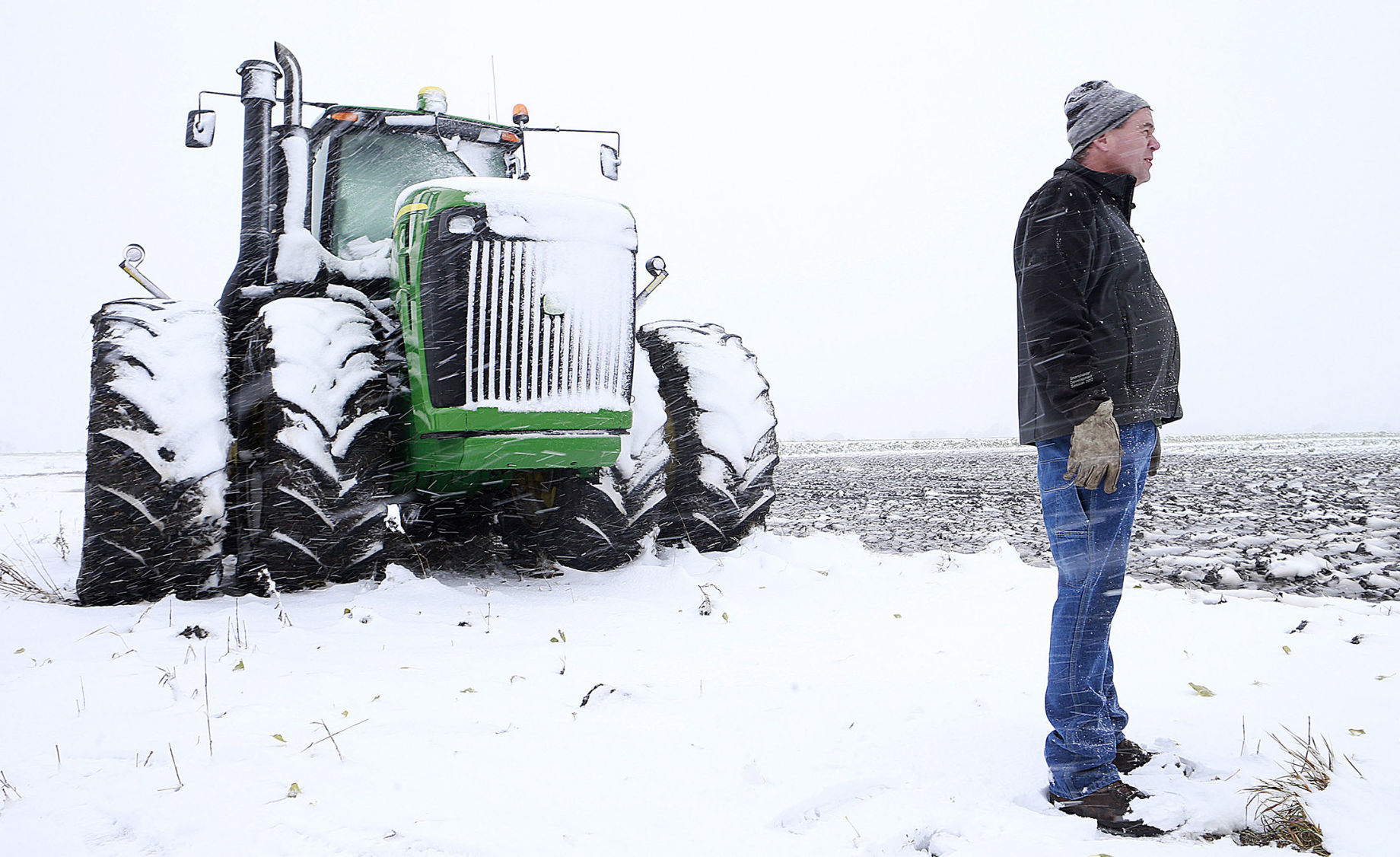Source: Farm Forum
In early October, Duane Maatz had high hopes for harvest season. The executive director of the Red River Valley Sugarbeet Growers Association thought there was potential to be finished with a majority of the harvest as early as Oct. 6—but his hopes froze as quickly as the ground did.
“Some farmers were not able to get into their fields even for a good two weeks or more,” said Grand Forks County extension agent Sam Haugen. “So that really delayed a lot of work because you wanted to try to get the sugar beets off because they’re a more sensitive crop and bring that in so they can get back to the soybeans and corn. There is still a lot of soybeans and corn for this time of year.”
The National Weather Service said the month of October set several records, with both extreme high and low temperatures. Meteorologist Bill Barrett said the month started out warm and quickly dropped to below-freezing temperatures with heavy snowfall and precipitation before returning to normal temperatures. Barrett said overall the month likely ranks as the seventh coldest October during the last 100 years.
Snow covered the region on Oct. 5, followed by another flurry on Oct. 10. Nearby areas saw up to 17 inches of snow during the storm and Barrett said areas west of Grand Forks County near Larimore, Valley City and Cooperstown were among the hardest hit.
Flurries so early on in the month are rare, but Barrett said they are not unheard of. Grand Forks had 7.6 inches of total snow in October placing it third for most snow over the last 30 years. The highest amount was 10.9 inches in 2001 and October on average only sees an inch of snow, Barrett said.
Haugen said sugarbeets were hit the hardest during the early snowfall because harvest is time-sensitive. Maatz said there were limited days available to harvest after the initial storm because conditions varied between cold, wet or both for much of the month.
“The ground doesn’t dry out as fast as it did during the summer anymore, so that adds another layer of complexity,” he said.
Early harvest started Aug. 14, and Maatz said nearly 20 percent of sugar beets were harvested within two days. The regular harvest began Oct. 1, and Maatz said the entire stockpile harvest is typically finished between Oct. 10-15.
“(Harvest right now is) between 94 and 95 percent, which sounds pretty good unless they’re your beets,” Maatz said. “The people that are not done may have 30 to 40 percent left. It’s a very significant amount on certain farms in certain areas.”
Producers near Hillsboro and Crookston are still finishing harvest. Maatz said the goal is to finish as soon as possible, but predicted rainfall could push the date back yet again. Haugen said the weather has also slowed harvest for soybeans, corn and sunflowers.
Soybean harvest has been 92 percent complete by the end of October on average over the last five years, but is only at 78 percent this year, data from the U.S. Department of Agriculture said. Corn harvesting sits 10 percent behind the average 44 percent.
Maatz said sugarbeet yield is down slightly because of the storms. He expects to see an average of 29 tons produced per acre, compared to last year’s 30-31 tons produced per acre.
Harvesting beets later in the season is more challenging because it’s harder and more costly for farmers to get the crop out of the ground and bring it to the piling site, Maatz said, and challenging for companies because storage procedures may need to be modified and extra mud and dirt can drive up processing costs.
“Just trying to get in there and get to work has been very difficult,” Haugen said. “This morning, I was driving and I saw some sugarbeets being harvested and there was a lot of other equipment and tractors that were pulling trucks and everything out of the field so they could get out of the mud. It’s a lot more manpower and a lot of other things that have gone into this year’s harvest.”
While most would agree October’s weather significantly complicated harvest for many farmers, Maatz said it isn’t the worst season in history or even recent memory.
“If you talk to some of the retired guys and they can tell you every year and what the date was when they had a long and difficult harvest,” he said. “So there are people that have dug beets into December, there are people that have dug beets into November. There are people who are around 40 who remember digging beets in November, too, so it happens. It’s not comfortable but it does happen.”
